Prologue
The Fairy Blessing of infant Princess Aurora
The fairies are visiting the world of mortals to celebrate the long-awaited birth of the infant Princess Aurora. The Lilac Fairy blesses the palace of the royal couple, King Heinrich and Queen Katharina. The three good fairies bring their wishes to the child and bless her with the gifts of beauty, vitality and generosity. Suddenly, the celebration is interrupted by the fairy Carabosse, who, shunned by the fairy world, ekes out an existence on its fringes. Enraged at having been excluded from the happy festivities, she casts a terrible curse: on her sixteenth birthday, Aurora will prick herself on a spindle and die. However, the Lilac Fairy has not yet granted her blessing: she makes Carabosse’s curse less severe. Aurora will not die, but fall into a long, deep sleep, from which only a kiss of true love can wake her. The king bans all spinning tools from his kingdom: anyone who does not follow will be punished with death.
Act 1
Carabosse’s curse recalled
Carabosse gives two young peasant girls knitting needles, which they have never seen before. As Carabosse intends, the pair is discovered by guards and taken before the king. Neither the king nor the queen can persuade the girls to admit where they got the needles from, and they are condemned to death. However, the thought of the terrible prophecy of her daughter’s fate moves the queen to mercy. In great despair, they set off to celebrate their daughter’s birthday festivities. Aurora’s sixteenth birthday
A "Fête Champêtre", a glittering open-air festival, is held in the palace garden. The Lilac Fairy has been invited to watch over the princess and to protect her from Carabosse‘s curse. Aurora receives four royal suitors who come with gifts of the kingdom’s finest roses. Together they dance the "Rose Adagio". Anxious for the day to end as safely as it has begun, the king unexpectedly breaks off the festivities and bids Aurora and the court to retire. The curse fulfilled
Aurora is confused by the abrupt end to her birthday party. Alone in her room, she is put into a trance by Carabosse. Helplessly, she faces her fate, as Carabosse appears to her with a spinning wheel and pricks her finger with the spindle. Carabosse’s dark power spreads. The Lilac Fairy’s promise
Waking from the trance, Aurora finds herself lost deep in the forest. Weakened, she collapses under the burden of the curse, and falls into a deep sleep. Carabosse and her evil escorts rejoice that Aurora will never be found. But the Lilac Fairy’s promise is stronger. The fairies
guide the royal couple to their daughter for them to sleep there with her until the princess is awakened by the kiss of true love. Rose briars grow up around the place where Aurora, guarded by the three good fairies, lies asleep.
Act 2
Prince Florimund visits the forest
One hundred years have passed. The legend of the sleeping beauty in the forest has become known throughout the kingdom. The young Prince Florimund, fascinated by the story, is determined to find the place where the princess lays. Carabosse appears as a lovely huntress and tries to distract him from his plan. Her henchmen take him off to an unknown place deep in the forest. Prince Florimund’s journey to the fairy world
The Lilac Fairy sends Florimund a vision of Aurora. Overcome with love, he begs the Lilac Fairy to guide him to Aurora. She warns him, the way will be difficult. She can only guide him and he must be prepared to overcome whatever obstacles lie in his path. Only he alone can make his dreams come true. A long journey begins: the seasons pass. Soon, though, it is spring, and he arrives at the place where Aurora lies hidden. Breathlessly, Florimund dreams of their first meeting. The kiss and Aurora’s awakening
His dream is rudely interrupted by Carabosse. Her evil sidekicks set upon him, but he easily defeats them. Infuriated, Carabosse calls up the darkest of all her powers. Borne by his love for Aurora, Florimund defeats her in a battle and shatters the power of evil. Carabosse becomes mortal. The Lilac Fairy’s promise is fulfilled by Florimund’s kiss, and Aurora and Florimund declare their eternal love for each other.
Act 3
The wedding
Princess Aurora and Prince Florimund have married and swear eternal allegiance to their new kingdom. The royal parents bless the couple. Carabosse, invited to the court, arrives bearing the ancient fairy gifts to the mortal world of corn and bread, symbolic of life and fertility, and swears allegiance to the mortals. The Lilac Fairy is invited as the special guest of honour and to pay homage to her the court is dressed in her colour lilac. The two royal houses are unified and the whole court rejoices in celebration.
Time: Baroque
Place: Europe
Prologue (The Christening)
King Florestan XXIV and his Queen have welcomed their first child, Princess Aurora, and declare a grand christening ceremony to honor her. Six fairies are invited to the ceremony to bestow gifts on the child. Each fairy brings a gift of a virtue or positive trait, such as beauty, courage, sweetness, musical talent, and mischief. The most powerful fairy, the Lilac Fairy, arrives with her entourage, but before she can bestow her gift, the evil fairy Carabosse arrives with her minions. Carabosse furiously asks the King and Queen why she had not received an invitation to the christening. The blame falls on Catalabutte, the Master of Ceremonies who was in charge of the guest list. Carabosse gleefully tears his wig off and beats him with her staff, before placing a curse upon the baby princess as revenge: Aurora will indeed grow up to be a beautiful, healthy, delightful young lady, but on her sixteenth birthday she will prick her finger on a Spindle and die. The King and Queen are horrified and beg Carabosse for mercy, but she shows none. However, the Lilac Fairy intervenes. Though she does not have enough power to completely undo the curse, she alters it, allowing the spindle to cause a peaceful 100-year sleep for the princess, rather than death. At the end of those 100 years, she will be woken by the kiss of a handsome prince. Relieved that Aurora's life will ultimately be spared, the court is set at ease.
Act I (The Spell)
It is the day of Princess Aurora's sixteenth birthday. Celebrations are underway, though the King is still unsettled by Carabosse's omen. The master of ceremonies discovers several peasant ladies frolicking about with knitting needles and alerts the King, who initially sentences the women to a harsh punishment. The Queen gently persuades him to spare the innocent citizens, and he agrees. An elaborate waltz is performed and Princess Aurora arrives. She is introduced to four suitors by her doting parents. Aurora and the suitors perform the famous Rose Adagio. Presently, a cloaked stranger appears and offers a gift to the princess: a spindle. Having never seen one before, Aurora curiously examines the strange object as her parents desperately try to intervene. As predicted, she pricks her finger. While initially appearing to recover quickly, she falls into a swoon and collapses. The cloaked stranger reveals herself to be Carabosse, who believes that her curse still stands and that the princess is dead. Once again, the Lilac Fairy quells the hubbub and reminds the King and Queen that Aurora is merely asleep. The princess is carried off to bed, and the Lilac Fairy casts a spell of slumber over the entire kingdom, which will only be broken when Aurora awakens. A thick layer of thorny plants grows over the palace, hiding it from view.
Act II (The Vision)
One hundred years later, Prince Désiré is attending a hunting party. Though his companions are lighthearted, the prince is unhappy and eventually asks to be left alone. On his own in the forest, he is met by the Lilac Fairy, who has chosen him to awaken Aurora. She shows him a vision of the beautiful princess, and the prince is immediately smitten. The Lilac Fairy explains the situation, and Désiré begs to be taken to the princess. The Lilac Fairy takes him to the hidden castle. Carabosse makes one last attempt to cement her vengeful curse, but the Lilac Fairy and the prince manage to defeat her together at last. Once inside the castle, Désiré awakens Aurora with a kiss. The rest of the court wakes as well, and the King and Queen heartily approve when the prince proposes marriage and the princess accepts.
Act III (The Wedding)
The royal wedding is underway. Guests include the Jewel Fairies: Diamond, Gold, Silver and Sapphire, and of course the Lilac Fairy. Fairytale characters are in attendance, including Puss in Boots and The White Cat, Princess Florine and the Bluebird, and others. Aurora and Désiré perform a grand Pas de Deux, and the entire ensemble dances. The prince and princess are married, with the Lilac Fairy blessing the union.
Structure
Titles of all of the numbers listed here come from Marius Petipa's original scenario, as well as the original libretto and programs of the first production of 1890. Major changes which were made to the score for Petipa's original production are mentioned, and help explain why the score is often heard in different versions in theatres today.
All libretti and programs of works performed on the stages of the Imperial Theatres were titled in French, which was the official language of the Emperor's Court, as well as the language in which balletic terminology is derived.
Prologue — Le baptême de la Princesse Aurore


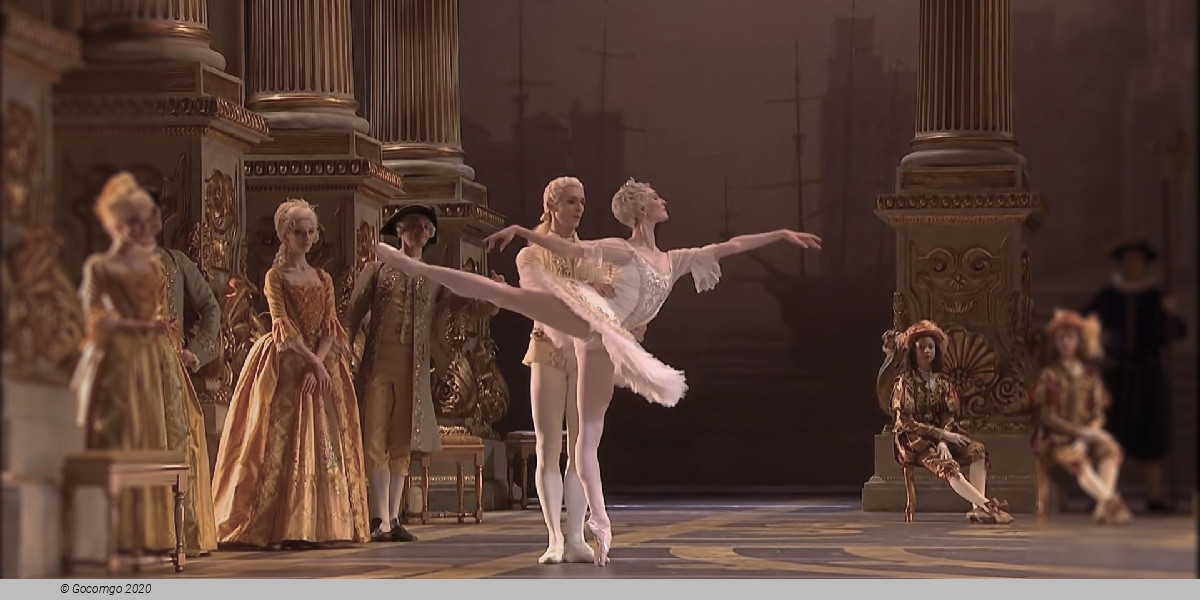

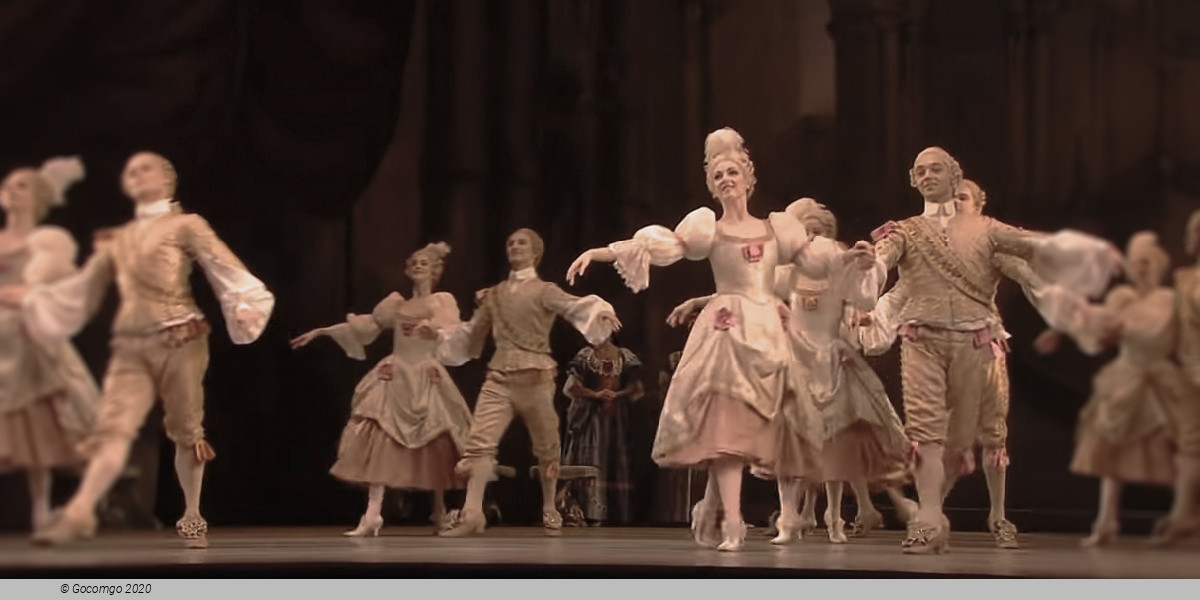
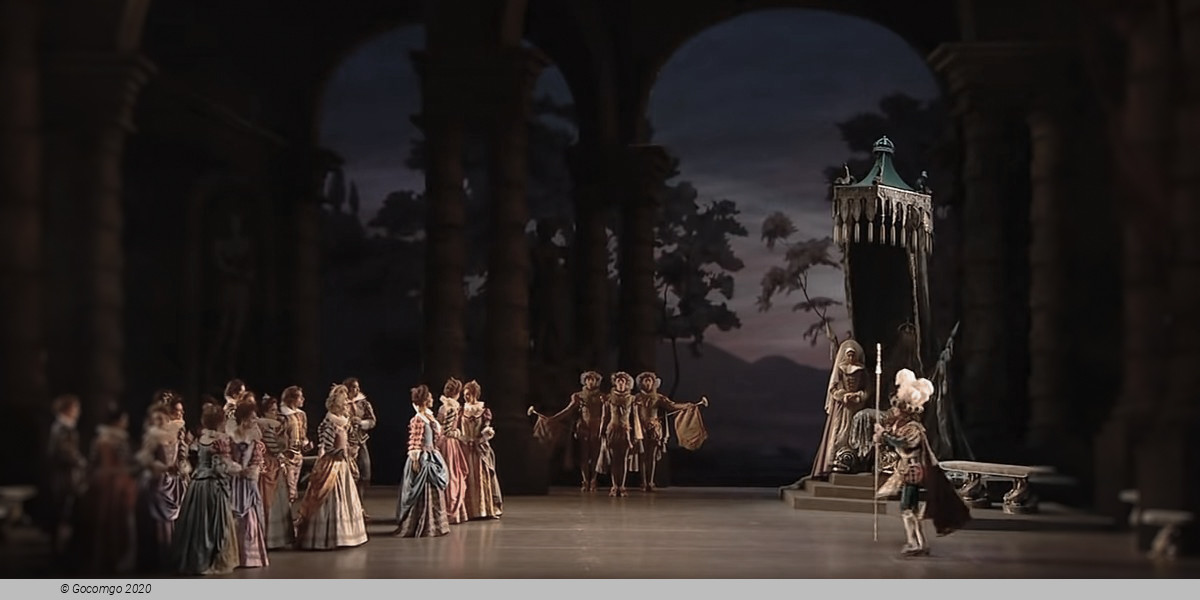
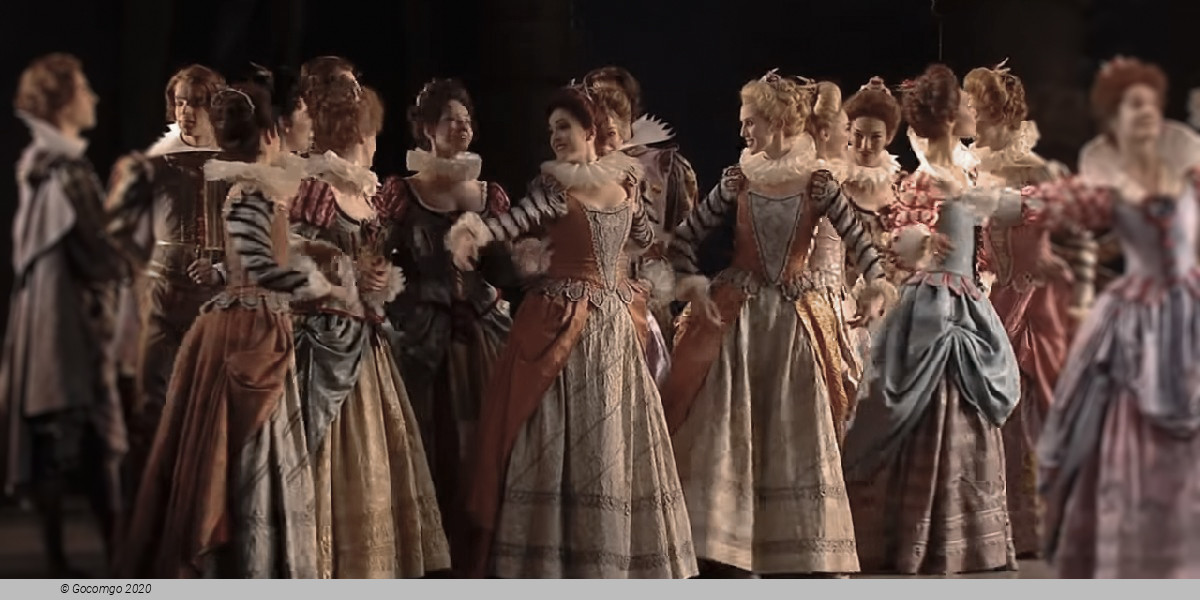

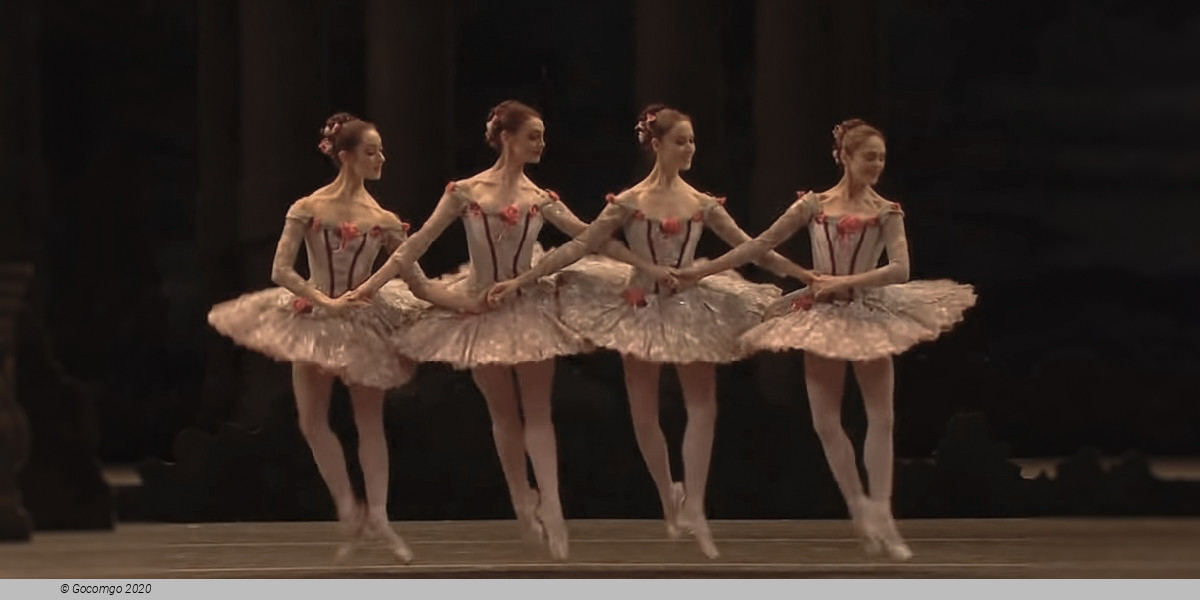
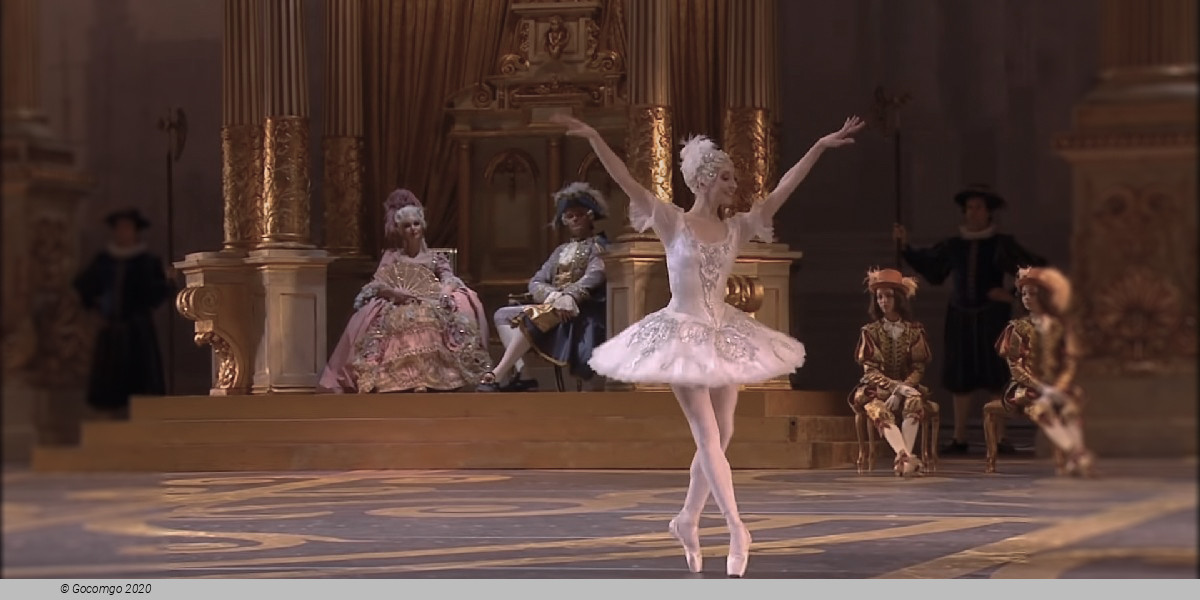
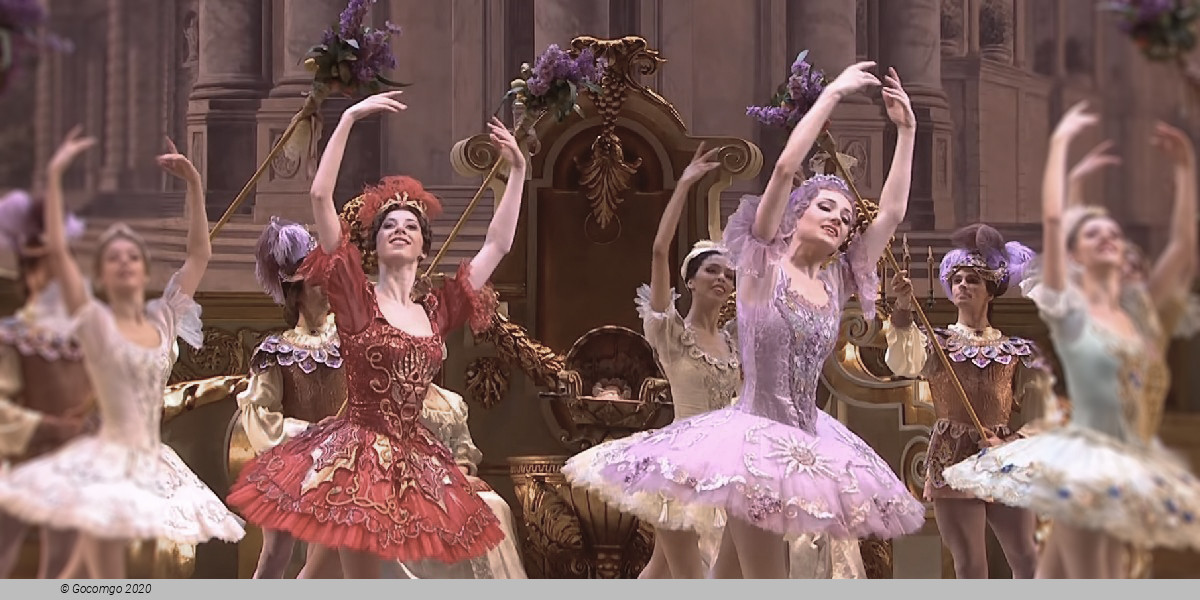
 Theaterplatz 2
Theaterplatz 2